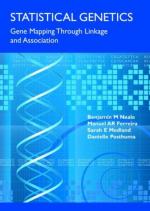|
This section contains 1,200 words (approx. 4 pages at 300 words per page) |

|
The aim of genetic mapping is to determine the linear sequence of genes in genetic material. The mapping can be performed at several levels of detail (resolution) that fall into two broad types: traditional genetic or linkage mapping and, more detailed, physical mapping.
Linkage mapping shows the relative rather than absolute positions of genes along a chromosome and is a technique that has been used since the early 1900s. Early geneticists determined that genes were found on chromosomes. They also reasoned that because the various forms of genes, or alleles, could be precisely exchanged during meiosis through crossovers between homologous chromosomes, the genes for specific characteristics must lie at precise points along each chromosome. It followed that the mapping of chromosomes could, therefore, be made from the observation of crossovers. Between 1912 and 1915, the American scientist Thomas Hunt Morgan (1866-1945) hypothesized that if genes were arranged linearly...
|
This section contains 1,200 words (approx. 4 pages at 300 words per page) |

|


